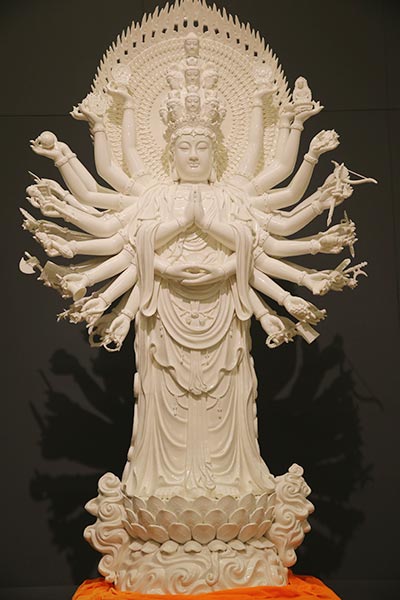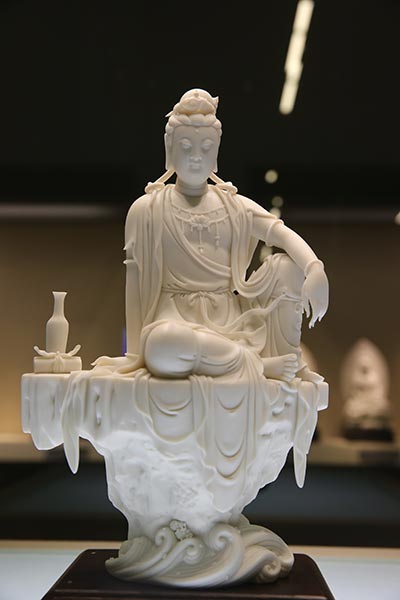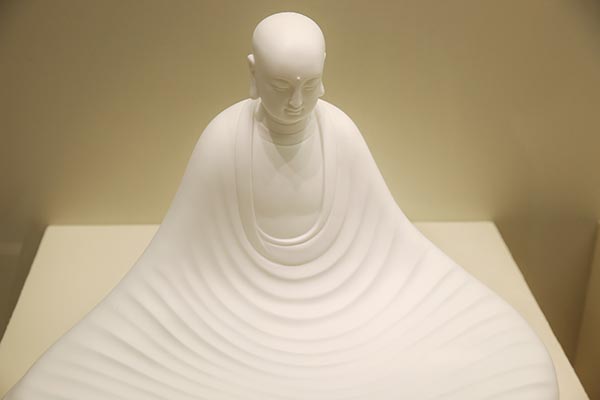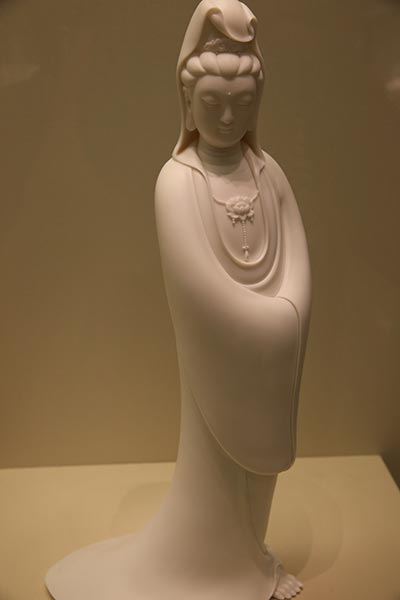DepthReading
Exhibition celebrates rich history of 'blanc de Chine'
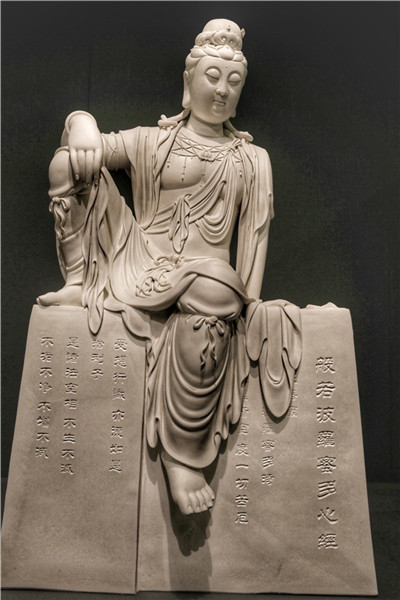 |
Heart Sutra, by Xu Ruifeng. [Photo by Jiang Dong/China Daily] |
For nearly 1,000 years, mountainous Dehua county in Fujian province has been producing ivory-white porcelain.
When pieces were exported in large quantities to Europe via the Maritime Silk Road between the 17th and 18th centuries, the wares won acclaim and were referred to in French as "blanc de Chine (white from China)".
Ancient Dehua porcelain can be found today in museums at home and abroad, includingBeijing's Palace Museum, the British Museum in London and the Metropolitan Museum of Art in New York.
The porcelain has also been excavated by archaeologists from wrecks of ancient ships, such as the Nanhai One, a Song Dynasty (960-1279) vessel found off South China's coast 30 years ago.
More than 180 porcelain objects by contemporary Dehua artisans are on show at the Silk Road Ambassador, China White exhibition at the National Museum of China in Beijing.
Wang Yi, the exhibition's curator and a researcher at the China National Academy of Painting, says the milky-white Dehua porcelain has a translucent glaze and features a jadelike texture.
"It transmits divinity, purity and grace," he says.
He says the artists-105 in total-include State-designated "arts-and-crafts masters" and up-and-coming creators, both of whose works show their endeavor to retain Dehua porcelain's charm.
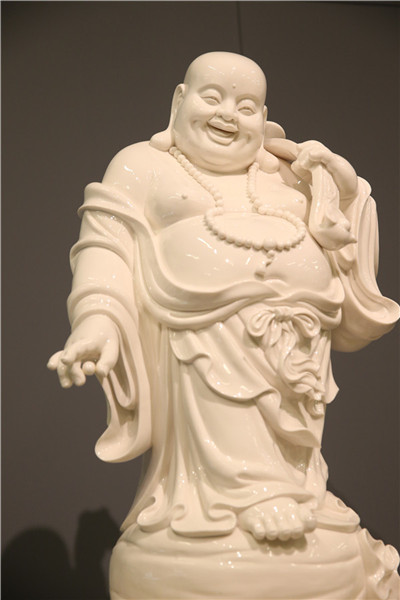 |
Maitreya Holding A Ruyi, by Chen Mingzhong. [Photo by Jiang Dong/China Daily] |
A typical example is the depiction of Buddhist figures, which is a favored subject, as the Chinese feel that white best represents the benevolence of sacred deities.
The figurines include Guanyin, the Chinese version of the Indian god Avalokitesvara who is represented as the Goddess of Mercy, arhats, Bodhidharma and Maitreya, the Buddha of the future.
Veteran artisan Qiu Shuangjong, 85, shows a 1.3-meter-high Guanyin, who stands on a lotus pedestal. She has three faces and a thousand hands, each of which holds a different ritualistic object. It is a conventional motif in Dehua porcelain, and the complicated representation best demonstrates a master's skills.
The exhibition also features works of Lian Zihua, 47, who is known to researchers of ceramic art as an outstanding follower of the 16th-century Dehua porcelain artist He Chaozong.
At 25, Lian was commissioned by the Palace Museum to replicate a Bodhidharma figurine sculpted by He.
Lian held a solo porcelain exhibition at the National Museum of China in 2014. One exhibit was a figurine he modeled after a colored wooden Guanyin statue. It took him more than eight months to complete.
Wang, the curator, says the exhibition also has works by a younger generation of artisans, who have cut back on the depiction of details and introduce an abstract style. Besides Buddhist motifs, they portray such themes as daily life and ordinary people's emotions.
If you go
9 am-5 pm, closed on Mondays, through Sept 1. 16 East Chang'an Avenue, Dongcheng district, Beijing. 010-6511-6400.
Category: English
DepthReading
Key words:

